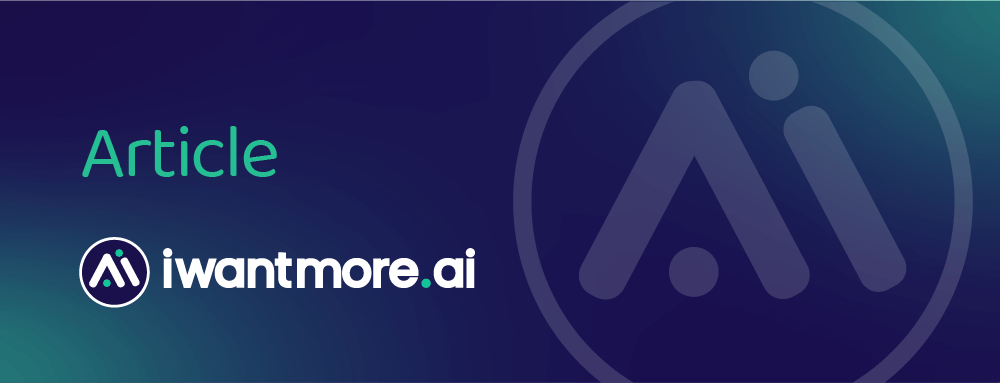
Shadow AI: the risk your business didn’t know it was taking
Listen to the audio version of this article:
AI tools have become indispensable for many businesses looking to boost productivity, creativity, and efficiency. Yet, lurking behind many official corporate policies (if they exist) is shadow AI.
Shadow AI refers to the use of unauthorised or unregulated AI tools by employees. While it may seem like an innocuous workaround, it can pose serious risks to organisations in terms of security, compliance, and operational effectiveness.
The unstoppable rise of shadow AI
Despite AI bans or in many cases the absence of clear guidelines, employees are adopting these tools en masse. They’re using them to streamline tasks, brainstorm ideas, and automate repetitive processes. Why? Because AI works. But without oversight, employees often gravitate towards free or consumer-grade tools that prioritise accessibility over security and performance. This creates a fragmented ecosystem of AI usage within organisations, where:
- Sensitive company data might be shared with unapproved platforms.
- Employees lack the training to use AI tools effectively.
- Organisations lose the ability to harness AI’s full potential at scale.
In essence, shadow AI isn’t just about employees breaking rules – it’s a symptom of organisations failing to provide the right tools and guidance.
The real cost of shadow AI
Shadow AI usage isn’t just about lost control; it comes with tangible risks:
- Data security: Free AI tools often come with unclear data usage policies, increasing the risk of breaches or misuse of sensitive information. In industries like healthcare and finance, this can be catastrophic.
- Inefficiency: Employees using unregulated tools might not be getting the most accurate or actionable insights, leading to suboptimal outcomes.
- Knowledge gaps: Without proper training, employees often use AI inefficiently, resulting in wasted time and a lack of trust in AI’s potential.
- Compliance issues: In sectors with strict regulatory requirements, the unauthorised use of AI could lead to significant legal repercussions.
Organisations that fail to address shadow AI risk falling behind competitors who embrace AI in a strategic and controlled manner.
How to address shadow AI: time for an AI amnesty?
Banning AI isn’t the answer. Employees are already using it, and outright prohibitions only push usage further underground. Instead, leaders should adopt a proactive approach to mitigate risks and empower employees:
- Acknowledge reality: Accept that AI is here to stay, and shadow AI will persist without clear alternatives. Recognising this reality is the first step toward addressing it effectively.
- Create clear AI policies: Develop clear, practical guidelines for AI use. Outline approved tools, permissible data-sharing practices, and prohibited behaviours.
- Invest in enterprise solutions: Offer secure, enterprise-grade AI tools that meet the needs of your workforce while protecting company data.
- Train your team: Equip employees with the skills to use AI responsibly and effectively. This includes guidance on ethical AI use, advanced prompting techniques, and integration with workflows.
- Foster a culture of innovation: Encourage employees to explore how AI can drive value for the organisation. When employees feel supported in their AI usage, they’re less likely to turn to shadow AI.
From shadow AI to strategic AI
The rise of shadow AI is a sign that employees recognise the value of AI but lack the official resources and support to use it safely and effectively. Rather than viewing shadow AI as a problem to eradicate, see it as an opportunity to help accelerate your organisation’s AI adoption.
By addressing the risks of shadow AI head-on and empowering employees with the right tools and training, you can transform a hidden liability into a competitive edge.
The question isn’t whether your employees are using AI – it’s whether they’re using it in a way that benefits your business.
We are a UK based AI consulting firm who support organisations to work with their teams to uncover their shadow AI and help them implement AI in a responsible and controlled manner. Contact us to see how we have helped other businesses overcome this challenge.
Other AI articles you may be interested in:

AI agents are the fancy buzzword of the day. Loads of hype, but also loads of potential. Despite the hype, over promise and noise, we are still witnessing the birth of a new business model: human-agent teams. Human employees that are building, managing and working alongside AI agents. Meet the agent boss.

We recently met a chief executive who despite his team asking for AI tools to help them work smarter, had decided that AI was not for him or his business. He even went as far as calling it ‘artificial unintelligence’. Despite this position, he admitted that competitors were taking market share. They were using AI to do a lot more with less. These were AI forward businesses. But what exactly is an AI forward business?

As AI tools become more widespread, some businesses are putting their money where their strategy is and offering financial rewards to employees who use AI in their work. It’s a bold move. But is it effective or could it backfire? And what message does it send to employees? We’ve taken a look at the pros and cons, including the very real human concerns around job security and why rewarding AI use can be a good move when done correctly.

Vibe marketing is the next big thing in digital marketing. But what is Vibe Marketing? Vibe marketing is a new approach that uses generative AI to translate a brand feeling or essence into marketing assets (images, copy, ads, full campaigns, and even product ideas). Coined from the concept of vibe coding, introduced by AI legend Andrej Karpathy, vibe marketing is all about marketers describing their brand’s feel, audience, and intention in plain English.

AI continues to move forwards at a ridiculous pace. New models are popping up weekly. Things you couldn’t do a week ago now seem second nature. But behind the headlines about innovation, is good old regulation. Whether it’s GDPR or new legal frameworks emerging to tackle foundation models, in the UK, AI won’t remain unregulated for long.

In the world of artificial intelligence, there's a slightly corny phrase that gets repeated a lot: ‘data is the new oil.’ I don’t like it, but it’s catchy. It makes a point. But like all catchy phrases, it oversimplifies reality. Yes, data fuels AI, but does that mean you need to stop everything until your data is pristine? Nope.
iwantmore.ai – The AI consulting firm that helps you build a smarter business
Wherever you are with your AI implementation initiatives, we have a range of stand-alone AI quick start services to help you fast track the transformative benefits of AI across your business.



